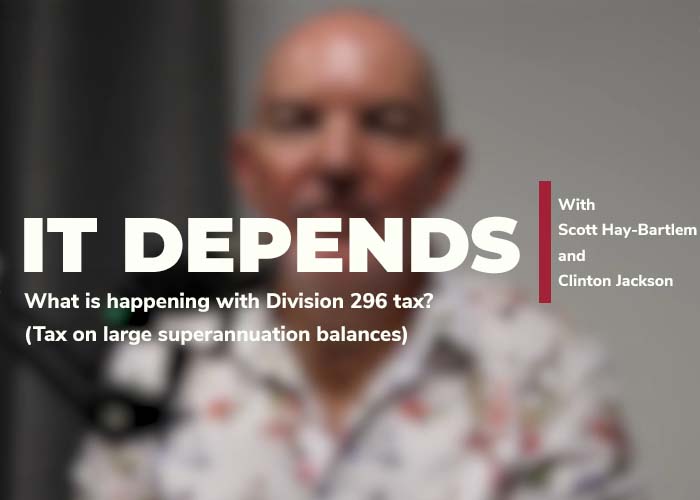An alleged guarantor may seek to argue they are not liable because, although named as guarantor, they did not sign the guarantee as guarantor but signed only as director of the debtor. Although there may be an anomaly concerning the signing of the guarantee, the alleged guarantor may still be liable. The outcome will depend on the circumstances.
Two cases discussed below, applying the same legal principles, resulted in different outcomes.
Alonso
This case involved a lease where:
- the alleged guarantor, Ms Sandford, was the sole director, manager and shareholder of the lessee
- the lease document named only one person, the sole director, as guarantor and contained promises by the guarantor
- the guarantee clauses and guarantee execution clause were not deleted.
Ms Sandford:
- signed her name above the word director and also handwrote her name
- argued she had signed the documents only as director of the principal debtor and not in her personal capacity as guarantor
- claimed she had no intention to be bound personally as guarantor.
The Court observed:
- an intention to be legally bound is manifested by the subject matter of the agreement, the status of the parties to it, their relationship to one another and other surrounding circumstances
- the presence of a signature ordinarily coveys a representation that the person signing agrees to be bound by the contents of the document
- however, the presence or absence of a signature is only one circumstance to be considered in determining whether there is an objective intention to be bound
- even if a signature is omitted from a place where it might have otherwise appeared, an intention to create legal relations can still be manifested
- uncommunicated and subjective beliefs and intentions of parties are irrelevant to the intention to create legal relations.
In Alonso the Court concluded there was an objective intention to be bound as guarantor for four reasons:
- Ms Sandford was specifically identified in the particulars of the lease as being a guarantor
- on the facts there was a peculiarity concerning the execution page of the guarantee that contradicted her suggestion that there was a clear absence of any signature by her in her personal capacity as guarantor
- the lease required all parties to initial any changes to the documents – Ms Sandford had done this in various points in the lease but had left the guarantee provisions unaffected
- a few days before the lease was expressed to commence, Ms Sandford wrote to the lessor stating the lease had been signed and in that letter:
- her signature was unqualified and did not indicate whether she was signing the letter as director only or also as guarantor
- there was no suggestion that she did not agree to the term of the lease that she be a guarantor.
Sleaford
In this case:
- there were two directors of the borrower
- the loan deed contained the guarantee terms
- only one director (the first director) signed as guarantor
- the other director (second director) signed the execution clause for the debtor as director but did not sign the guarantor execution clause
- the second director argued he was not liable under the guarantee.
In considering the four indicators in Alonso, the Court in Sleaford concluded on the facts that the second director was not liable as guarantor.
Although the director was specifically named as a guarantor in the loan deed, the body of the document referred to guarantors in the plural.
Regarding the disputed execution by the second director:
- he executed every page except for the page with the second guarantor execution clause
- where his signature appeared, it was above the line expressly identifying him as a director/ secretary
- he had signed his name quite clearly as director/secretary in respect of the lessee’s execution
- there was an irregularity regarding the guarantor execution for the second director because it was purported to have been witnessed but there was no signature by the second director
- he stopped signing where the guarantor execution clauses began
- on the facts, there was no confusion as to the clear absence of the second director’s personal liability.
Although the document required all parties to initial any changes and the second director did not delete the guarantor provisions, the Court distinguished this because:
- in Alonso there was only one director and one guarantor
- the guarantor provisions in this case needed to remain to apply to the first director.
The Court was not persuaded by the lender’s argument that the second director was liable as guarantor because the first director would not have signed the guarantee if he knew it was not being signed by the second director. The Court said there was insufficient evidence regarding this issue.
With respect to the fourth indicator in Alonso:
- there was no letter written by the director a few days before the transaction was to commence
- the second director was not materially involved in the negotiations and communications in respect of the loan
- the second director did communicate he would not provide a guarantee before the loan was advanced because he did not sign as guarantor.
Comments
The absence of a signature is not conclusive evidence of whether or not a person is bound by the document.
Although Alonso and Sleaford considered four indicia for determining whether there was an objective intention to be contractually bound, the indicia are not an exhaustive list of relevant considerations, which will depend on the circumstances of the matter.
It should also be noted that, even if the guarantor has correctly signed the guarantee, there may be technical defences available to the guarantor to avoid liability. Once again, this depends on the terms of the guarantee and the circumstances.






